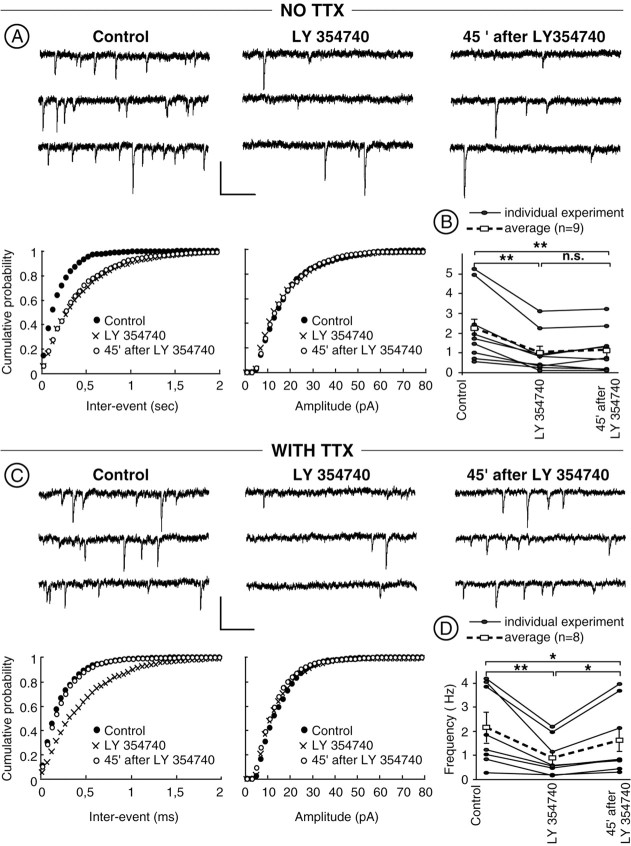Fig. 6.
mGlu2/3-LTD is reduced on Ca2+-independent spontaneous EPSCs.A, B, Spontaneous EPSCs recorded in the absence of TTX express both acute and long-term effects of mGlu2/3 activation. A, Typical experiment. Representative consecutive 1 sec current sweeps from a cell (holding potential of −70 mV) in which sEPSCs were recorded in the absence, during, or 45 min after LY354740 (200 nm). Calibration: 30 pA, 200 msec. The distribution of sEPSC inter-event intervals was altered after bath-perfusion of LY354740. B, Mean frequency of sEPSCs was equally reduced during and 45 min after LY354740 perfusion. **p < 0.01.n.s., Not significant. C,D, Action potential-independent miniature EPSCs recorded in the presence of TTX (300 nm) express acute but reduced long-term effects of mGlu2/3 activation. C, Typical experiment. Representative consecutive 1 sec current sweeps from a cell (holding potential of −70 mV) in which mEPSCs were recorded in the absence, during, or 45 min after LY354740 (200 nm). Calibration: 30 pA, 200 msec. The distribution of mEPSC inter-event intervals was altered during application of the mGlu2/3 agonist but was back to normal after 45 min. The distribution of mEPSC amplitude was unchanged after bath perfusion of LY354740.D, Mean frequency of sEPSCs was significantly more reduced during than 45 min after LY354740 perfusion. *p < 0.05; **p < 0.01.

